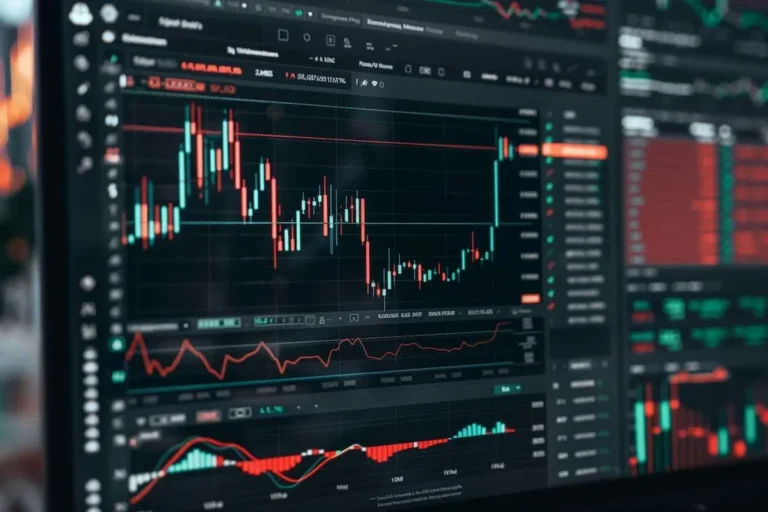In any financial ecosystem, the smooth circulation of finances is essential. When that flow is interrupted, even briefly, the effects ripple through institutions, businesses, and individual traders alike. Delays in payments, shifts in demand, or sudden policy changes can all restrict access to ready cash, creating moments of imbalance and a liquidity gap that impairs financial forecasting for market participants. Below, we will analyze gaps in more detail and why they occur.
Understanding Liquidity Gaps
A liquidity gap occurs when there is a mismatch between the inflow and outflow of cash over a specified interval. Essentially, it is a shortfall that we see when liabilities exceed available money. Such a mismatch can lead to temporary or permanent financial pressure, depending on its causes and extent.
The funding gap is not restricted to one sector; it occurs in stock exchanges, the banking sector, and entrepreneurial activity. The shortage is especially dangerous in situations where prompt access to money is critical.
Gaps on a chart are zones where the value of resources moves rapidly up or down, with little or no trading between them. It results in breaks in the standard cost pattern on the chart. Experienced traders can spot such gaps and utilize them to get a profit.
It is also essential to recognize the distinctions between a fair value gap vs liquidity void. A fair value gap (FVG), occurs if there is a considerable distinction between the number of bids to purchase and sell an asset. This problem affects all types of assets, including commodities, raw materials, fiat money, and cryptocurrencies.
FVGs indicate the interval when participants are inclined to purchase or sell, but cannot find counteroffers.
Liquidity shortages are essentially a larger-scale version of fair value gaps. FVGs occur frequently and show daily tendencies in industry sentiment. Liquidity gaps indicate a rapid revaluation of assets, usually after significant events (although there are exceptions).


Turnkey Brokerage Solution For Your Business
Get the most profitable fully licensed fx/crypto brokerage software or ready-to-operate business in 48 hours. Best-in-class web & mobile trading platforms, sales-driven CRM, full integration with MT4/5, and 150+ payment providers.
Causes of Liquidity Gaps
Such gaps do not just happen. They are related to the actual market structure, trade flow, and timing. Below, we will examine the leading causes in more detail.
- Press releases or financial events. When authoritative sources publish data indicating a decrease in the rental rate or an increase in inflation, market participants may withdraw their orders, which can negatively affect liquidity. Market makers do not intervene until the situation improves and the cost leaps to another source of liquidity.
- Weekend problems. Many platforms, including Forex, are unavailable on weekends. Still, critical political events and unexpected central bank decisions can cause costs to move dramatically early in the week, creating a gap on the chart.
- Illiquid periods. During quiet periods between key trading sessions, such as the close of the New York exchange and the opening of the Tokyo market, liquidity can deteriorate. Even a limited number of trades may create sharp swings and shortages.
- Stop hunts and order flow sweeps. In some situations, liquidity is deliberately understated. Establishments sweep a portion of the order book to activate a stop-loss or clear the way for a cost increase or decrease.
These are just the primary triggers for liquidity shortage, although in reality, any event can trigger them.

Impact of Liquidity Gaps on Trading
The consequences of gaps are significant and may potentially impact all aspects of trading and the broader economic system. Let’s examine the primary sectors of influence.
- Impact on financial institutions. Such a shortage can lead to disruptions in the short-term financing sector. To achieve optimal liquidity, such institutions often have to sell assets at a discount, which negatively impacts their balance sheet.
- Impact on market participants. For traders and investors, liquidity problems lead to higher transaction costs and significant price risks. In some situations, participants may struggle to sell their resources quickly, which may worsen their capital movement. Such gaps undermine confidence in the industry.
- Overall impact on the economy. Liquidity gaps may exacerbate the real economy’s influence through financial markets, leading to a credit crunch and a decline in resource prices. Businesses may experience disruptions in investment channels and a drop in customer confidence. It will lead to a decrease in investment and a halt in economic growth.
As we have seen, even minor liquidity shortages may lead to a collapse of trading activity and the entire economic system.
How to Manage Liquidity Risk
All industry participants must correctly handle liquidity risks. Below, we will analyze the main points that brokers and other participants should remember.
Traders:
- Choose limit orders rather than market ones. A limit order defines the largest amount a participant is willing to pay or the minimum sum he is ready to accept, which reduces the likelihood of slippage.
- Collect various asset categories and avoid operations with minimum liquidity. With diversification, you can mitigate shortages in individual resource groups. We also recommend avoiding illiquid sectors.
- Read the news. Monitor the latest financial and political events to anticipate potential intervals of volatility and adjust your trading strategies in time.
Intermediaries:
- Utilize multiple liquidity providers (LPs). Having multiple sources of liquidity creates a stable flow of trades even during times of significant volatility. Before adopting this approach, make sure you have assessed all the strengths and weaknesses of utilizing multiple LPs for your business.
- Use risk mitigation instruments. Constantly tracking supply and demand allows you to define future liquidity problems. Intermediaries should use innovative risk management systems to track trade flow, volatility, and other market parameters.
- Adopt innovative order execution tactics. Intermediaries may offer clients access to different categories of trades, including iceberg orders. They break large trades into smaller parts to reduce their impact on cost and risks.
Such recommendations do not guarantee that you will not face liquidity risk, but they will help reduce the likelihood of adverse events occurring.
Liquidity Gaps in Forex and Crypto Trading
In Forex, a liquidity gap refers to the distinction between the opening cost of a currency pair and its closing cost from yesterday. Any sharp change in the cost of a currency pair up or down is already called a gap.
In gap algorithmic trading, participants try to find currency pairs that open at a more considerable or lower cost than yesterday’s closing cost, track the dynamics, and enter a trade.
In the Forex market, gaps are candlestick patterns on a chart, and a sharp cost change is especially noticeable when there is minimal liquidity in the volume of transactions.
Let’s examine how to define shortages in the sector.
- Seek to identify stable support and resistance levels within the industry.
- Suppose there is a stable resistance, and the cost of the currency pair surpasses this parameter before reverting to its initial position. In that case, this is a signal that it is time to get rid of the resources.
- If there is stable support and the cost of the pair drops below this level before returning to its initial position, it is time to deal with assets.
Shortfalls in the cryptocurrency sector are similar to shortages in other financial areas, such as Forex. However, gaps here do not occur as often as in standard markets. It is primarily because the digital asset sector operates 24/7, unlike the Forex and securities markets, which close on non-working days and may start their activity with significant shortages. However, the gaps that occur in this industry are often associated with considerable investor activity and rapid changes in liquidity and transaction volumes.
Understanding gaps is essential for individuals, businesses, and financial establishments. It provides an accurate picture of current financial positions and risks, enabling rational decisions when lending, investing, and forecasting.






